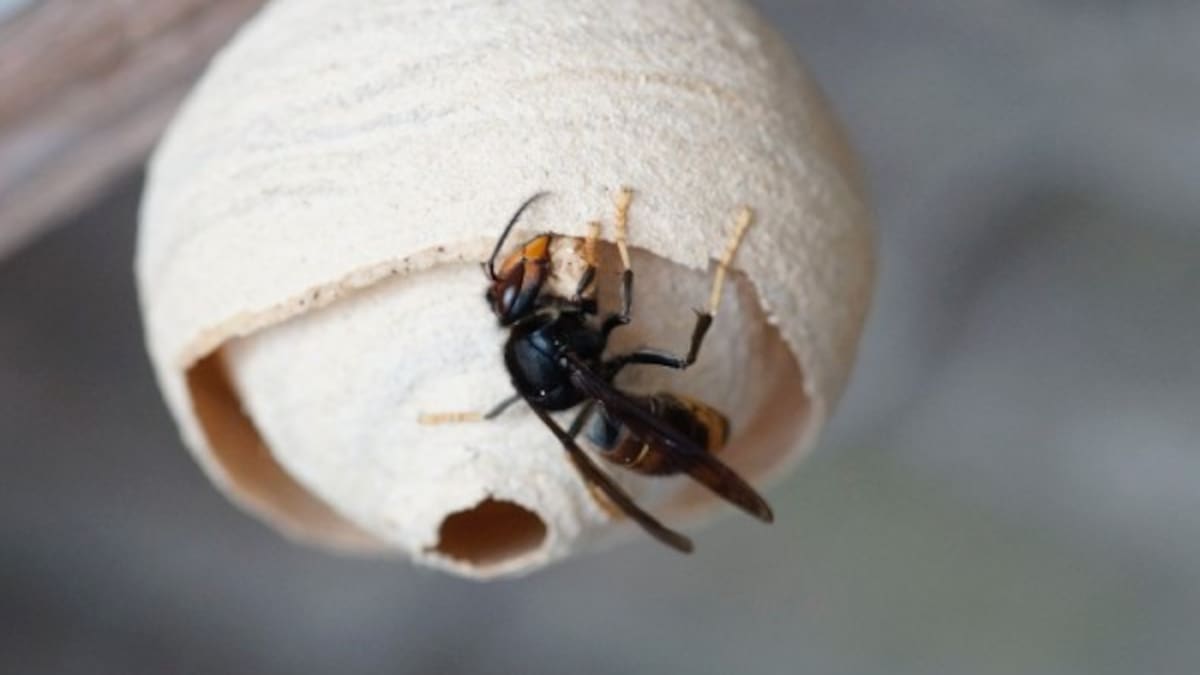“To support surveillance, Biosecurity New Zealand is laying traps in a measured way in areas where females have been found. By the end of today, we will have 120 traps in the field.”
The yellow-legged hornet (Vespa velutina) presents a biosecurity concern because of its potential impact on honeybee and wild bee populations.
The yellow-legged hornet (far left) compared to species established in New Zealand: (from left) German wasp (Vespula germanica), Asian paper wasp (Polistes chinensis) and Australian paper wasp (Polistes humilis). Photo / Biosecurity New Zealand
“Many countries throughout Europe and Asia have yellow-legged hornet and manage it. However, we don’t want it here and that is why we’re tracking it down,” Inglis said.
He said there had been a “fantastic response” to Biosecurity NZ’s request for help with surveillance.
“To date, we’ve received more than 1000 notifications via email and phone with no new confirmed finds since the weekend.”
Members of the public are asked to report any sightings of suspected hornets or hornet nests online, or by calling Biosecurity NZ’s exotic pest and disease hotline on 0800 809 966.
“Members of the public are asked to report any sightings of suspected hornets or nests, but only if they have a specimen, a clear photo of the suspected hornet, or have found a possible hornet nest,” Biosecurity NZ said.

